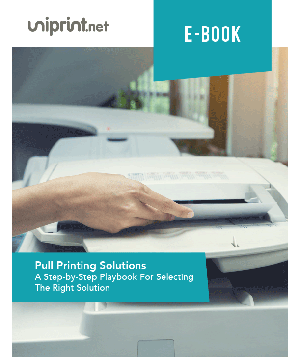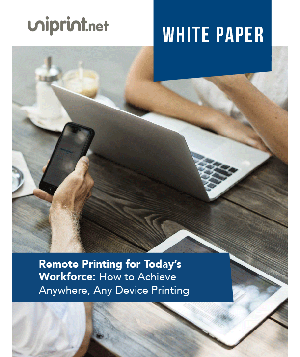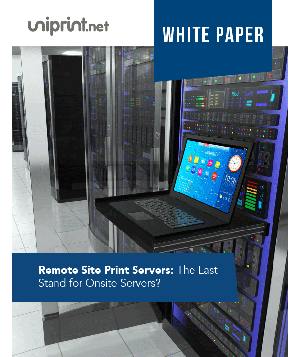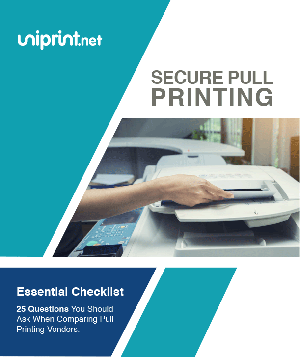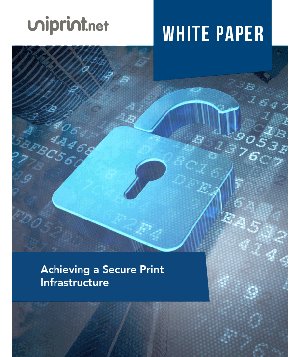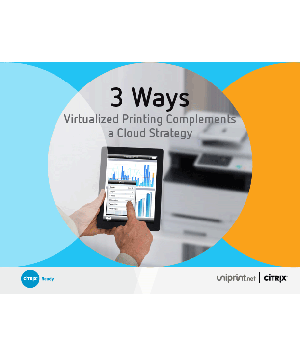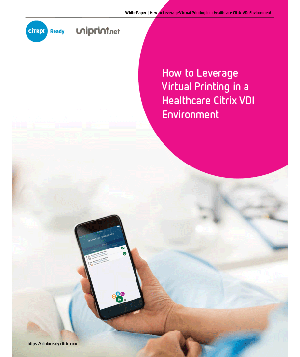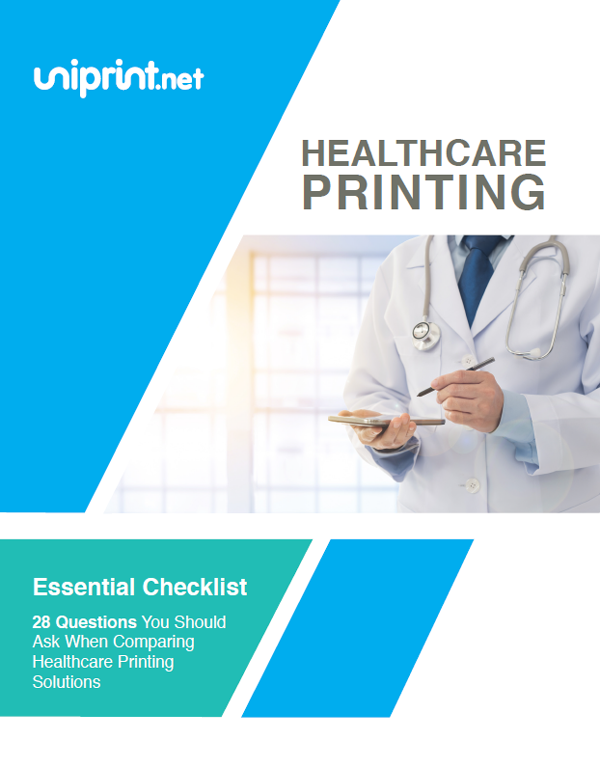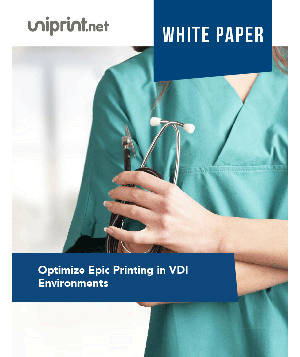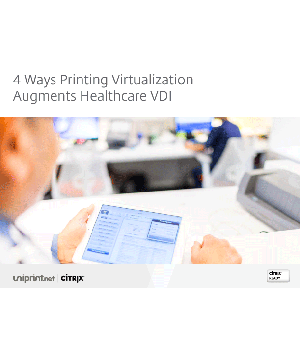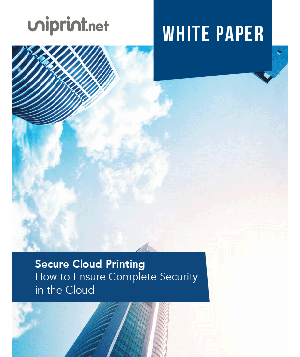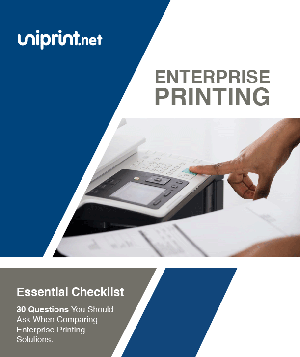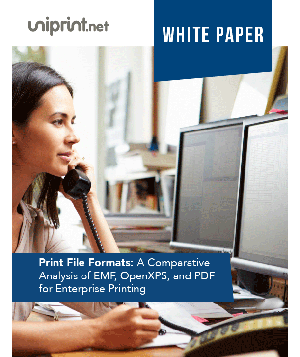
“With UniPrint, our medical personnel get time back in their day”
– David Baker, Vice President IT, St. Joseph Health
St. Joseph Health (SJH) saves on clinician time and improves patient care through UniPrint’s Secure, On-demand Printing
The Organization
St. Joseph Health (SJH) is an integrated Catholic healthcare delivery system sponsored by the St. Joseph Health Ministry.
Organized into three regions (Northern California, Southern California and West Texas/Eastern New Mexico), SJH provides a full range of care facilities including 14 acute care hospitals, home health agencies, hospice care, outpatient services, skilled nursing facilities, community clinics, and physician organizations.
The company maintains a “continuum of care,” matched to the diverse needs of urban centers, small cities and rural communities.
It employs over 24,000 professionals and has $5 billion in annual revenue.
The Challenge
With the second largest emergency department and ten additional sites in California, a dispersed, six-zone printing environment in West Texas/Eastern New Mexico, SJH needed a solution that would help with printer management issues and user profile corruption in a virtualized desktop infrastructure (VDI) environment.
St. Joseph Hospital of Orange (SJHO) is an extraordinarily busy environment with a fast-paced workflow.
With fifty beds in an ER serving 90,000 patients each year, doctors at SJHO may see tens of patients each hour, making every moment of their time crucial.
SJH’s West Texas/Eastern New Mexico region has over 1,200 printers in use, and their clinics present highly mobile printing environments.
Employees may work across three zones at a time making intact user profiles that can be recognized instantly when logging in and out of different zones a necessity.
Both regions use locked down PCs as thin clients that launch into a Citrix XenDesktop environment along with Meditech HIS (health information system) to access medical records and Imprivata OneSign for single sign-on capabilities.
Doctors and nurses can simply tap their badges on a card reader at any computer workstation to open their applications.
Users are able to bring their session with them to any location including an emergency department, clinic or hospital.
In the old system, printers had to be installed on each local machine.
A user would have to log in to set the local printers up and then have Citrix pull the printers into the Citrix session every time they logged in (or moved to a new machine) and Meditech could only define one printer per function.
This meant healthcare professionals had printer setup work to do at the start of every shift.
This was complicated by the fact that Citrix profiles would routinely become corrupt, with the list of local printers not being cleared out or updating when users moved to another computer.
“As doctors we need to print prescriptions, patient histories, medical records, x-rays, discharge papers and more, and it’s important we can do it in a timely manner,” said Dr. Brian Lee, physician at SJHO.
“In the ER we have doctors at all stations constantly printing to various printers. Before UniPrint, our old system wouldn’t remember defaults, and actually listed every printer on our hospital network, so you could accidentally print to Texas or Northern California instead of your own location!”
With the high volume of printers across SJH’s massive footprint, users would need to log on and scroll through pages of different printers with unintuitive names, to locate the one they wanted to set up for use.
Printer setup was neither easy nor reliable; sometimes a user could get a printer selected and functioning in five minutes, other times they would try for twenty minutes and then have to call IT support.
Reducing the number of calls to the service desk and the tickets being generated, as well as reducing the number of teams required to install and manage printers, became primary goals.
Printing issues were also affecting patient care. If a print job failed, a patient could be left waiting for a prescription or discharge forms.
The inefficiency of not being able to discharge patients in a timely fashion represented significant added costs.
SJH had looked for a better healthcare print management solution in the past, but its unique environment required a printing system that would improve upon the limitations of Meditech and integrate seamlessly with its current infrastructure, workflow and applications.
White Paper: Leverage Virtual Printing in your Healthcare VDI Environment
The Solution
In July 2013, UniPrint launched a proof of concept (POC) at SJHO to implement its Infinity software solution.
With UniPrint Infinity’s PDF-based Universal Printer Driver, the application server no longer required the installation of manufacturer printer drivers for each model of printer in use.
UniPrint Infinity’s Smart Routing was able to map print jobs behind the scenes to mitigate Meditech’s single definition challenges and printers could be easily selected, with the nearest printer to the user’s location always readily available.
The pilot of UniPrint Infinity at SJHO was so successful that it reduced the number of print-related help desk tickets by over 90% during the entire four month trial.
SJH was so pleased with the results and the improved productivity gained by clinical personnel in the subsequent West Texas/Eastern New Mexico implementation that it signed on to deploy UniPrint Infinity in 10 additional sites across California.
Mistaken or lost print jobs are now a thing of the past, safeguarding HIPAA compliance and other patient confidentiality issues.
Paper waste has been minimized by allowing the user to easily select special prescription form or regular paper.
The installation time and maintenance of printers – previously cumbersome tasks – are now streamlined.
Medical personnel now spend less time thinking about technology issues and have more time to focus on clinical care.
“We used to have to go through lists of printers and hit several buttons to print a single document, then sit and wait for the print job to complete, and try again if it didn’t,” continued Dr. Lee.
“In a fast-paced medical environment, any delay counts as a big one. UniPrint now lets us use the nearest printer so you can’t make a mistake. The end user can just hit print and a piece of paper comes out. Training for all of our doctors took about two minutes, which shows you just how easy it is to use.”
The Benefits
“With UniPrint, our medical personnel get time back in their day. There’s less frustration because they no longer have to decide which printer they want to use based on their location, UniPrint chooses for them. There are less calls to the Service Desk about printing issues because the product just works,” said David Baker, Vice President IT at St. Joseph Health.
“UniPrint is totally customizable to SJH’s workflow and it does what is says on the tin: it makes IT simple.”
The UniPrint Infinity solution significantly simplified printing and eliminated frustrations and pain points for end users and IT staff.
The deep reduction in help desk tickets has allowed for the streamlining of technical support teams and lowering administration costs.
Now that IT staff only needs to manage a single driver for all printers on the network, they are freed up to focus on other mission-critical tasks.
Improved workflow enables the medical personnel to get through their days more easily and be more productive.
Printer users can effortlessly have their printing needs served, using the printers and locations they prefer. The technology is reliable and unobtrusive: it simply works.
According to Dr. Lee, “UniPrint’s solution immediately took care of 90% of our printing issues.”
Key Benefits Include:
-
- Fast and error-proof location-based printing
- Simplified printer management for a large network of printers
- Improved printing speed by reducing bandwidth usage
- Quick and easy implementation, doctors and nurses trained in minutes
- Improved workflow leading to improved clinical care
- Reduction of print-related help desk calls by over 90% resulting in lower IT admin costs
- Secure, on demand printing affords better protection of patient data
- Reduced paper waste (particularly costly in an clinical environment)
On Demand Webinar: How to Achieve VDI Success in Healthcare IT


